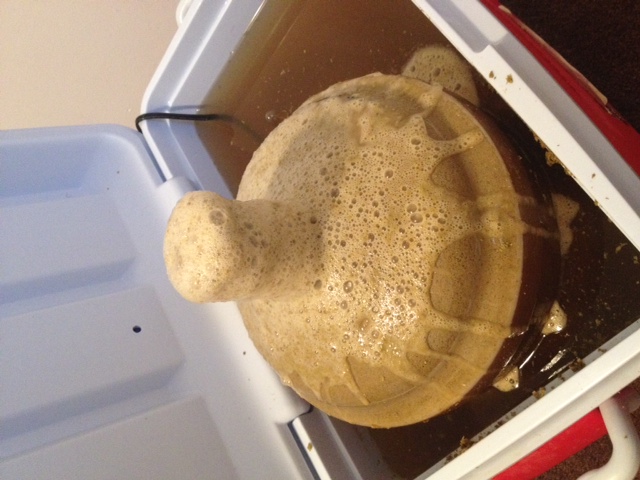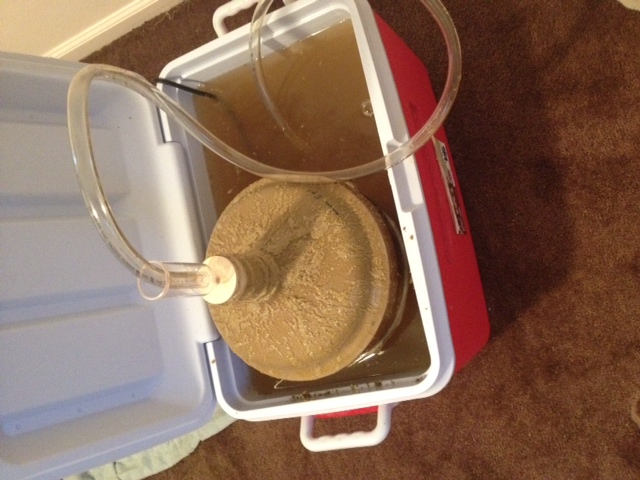SeanFawcett
Member
Hi:
(I'm reasonably new to home brewing)
I recently brewed a one gallon batch of HBX Red Ale:
http://homebrewexchange.net/content/hbx-red-ale
and I think I was a little over-ambitious with the yeast. After a day or so, the air lock clogged with yeast and the cork blew out of the bottle sending hops and yeast flying.
I re-corked it with a clean air lock and let it ferment for the rest of a week.
The recipe suggests that the fermentation should subside in 5-7 days and calls for an Original Gravity of 1.049 and Final Gravity of 1.013
My Original Gravity was 1.050, the brew stopped fermenting after about 3 days, and when I siphoned into a secondary fermenter this morning, the Final Gravity was 1.020 (tasted good, though).
I have a few questions.
Or... should I just leave it for a few days and bottle it?
Thanks
(I'm reasonably new to home brewing)
I recently brewed a one gallon batch of HBX Red Ale:
http://homebrewexchange.net/content/hbx-red-ale
and I think I was a little over-ambitious with the yeast. After a day or so, the air lock clogged with yeast and the cork blew out of the bottle sending hops and yeast flying.
I re-corked it with a clean air lock and let it ferment for the rest of a week.
The recipe suggests that the fermentation should subside in 5-7 days and calls for an Original Gravity of 1.049 and Final Gravity of 1.013
My Original Gravity was 1.050, the brew stopped fermenting after about 3 days, and when I siphoned into a secondary fermenter this morning, the Final Gravity was 1.020 (tasted good, though).
I have a few questions.
- Did I lose too much yeast when the cork popped?
- Should I have added more?
- Should I add more to the secondary fermentation?
- Should I add more sugar (for the yeast to work with) in the secondary fermentation?
Or... should I just leave it for a few days and bottle it?
Thanks
























































![Craft A Brew - Safale BE-256 Yeast - Fermentis - Belgian Ale Dry Yeast - For Belgian & Strong Ales - Ingredients for Home Brewing - Beer Making Supplies - [3 Pack]](https://m.media-amazon.com/images/I/51bcKEwQmWL._SL500_.jpg)


